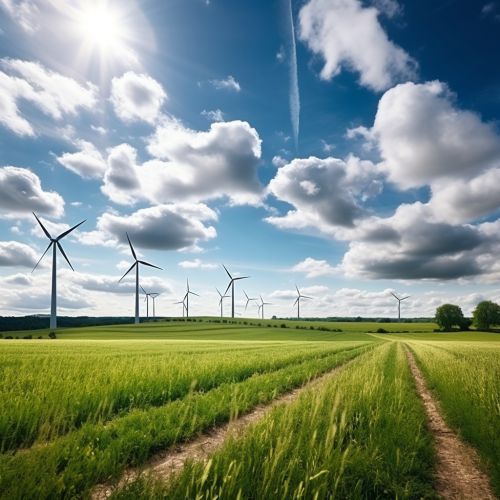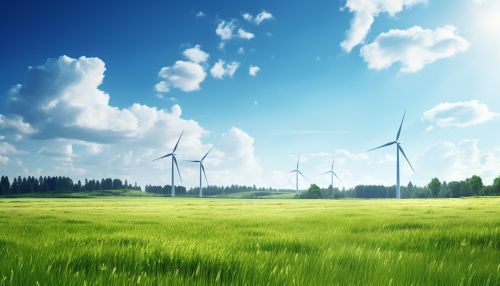Green Economy
Introduction
The green economy is a model of economic development that aims to reconcile human prosperity with environmental sustainability. It is characterized by significantly reduced environmental risks and ecological scarcities, and it aims to be low carbon, resource efficient, and socially inclusive.
Definition and Principles
The United Nations Environment Programme (UNEP) defines the green economy as one that results in improved human well-being and social equity, while significantly reducing environmental risks and ecological scarcities. It is characterized by sustainable consumption and production patterns, low carbon emissions, efficient use of resources, and a socially inclusive approach to economic development.
The green economy is based on several key principles. These include the sustainable use of natural resources, the reduction of carbon emissions and waste, the promotion of social equity and inclusion, and the creation of decent jobs and economic opportunities.
Economic Sectors
The green economy encompasses a wide range of economic sectors, including renewable energy, sustainable agriculture, green building, and sustainable transport. These sectors are characterized by their low environmental impact and their contribution to sustainable development.


Renewable Energy
The renewable energy sector is a key component of the green economy. It includes the production of energy from renewable sources such as wind, solar, and hydroelectric power. The renewable energy sector contributes to the reduction of carbon emissions and the mitigation of climate change.
Sustainable Agriculture
Sustainable agriculture is another important sector of the green economy. It involves farming practices that are environmentally friendly, socially equitable, and economically viable. Sustainable agriculture contributes to food security, biodiversity conservation, and the sustainable use of natural resources.
Green Building
The green building sector involves the design, construction, and operation of buildings in a way that minimizes their environmental impact. Green buildings are energy efficient, use sustainable materials, and are designed to improve the health and well-being of their occupants.
Sustainable Transport
Sustainable transport involves the use of transportation modes that are environmentally friendly and socially inclusive. This includes public transportation, cycling, walking, and the use of electric vehicles. Sustainable transport contributes to the reduction of carbon emissions and air pollution.
Benefits and Challenges
The green economy offers a number of benefits, including environmental sustainability, economic growth, and social inclusion. However, it also faces several challenges, such as the need for technological innovation, policy support, and public awareness and acceptance.
Conclusion
The green economy represents a new paradigm of economic development that is environmentally sustainable, socially inclusive, and economically viable. It offers a pathway towards a sustainable future, but it requires concerted efforts from all sectors of society to realize its full potential.
